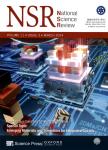Resilience patterns of human mobility in response to extreme urban floods
作者机构:School of Urban Planning and DesignShenzhen Graduate School Peking University 2. Key Laboratory of Earth Surface System and Human-Earth Relations of Ministry of Natural Resources of China Shenzhen Graduate SchoolPeking University School of Urban and Environmental Sciences Peking University Key Research Institute of Yellow River Civilization and Sustainable Development&Collaborative Innovation Center on Yellow River Civilization Henan Province and Ministry of Education Henan University 5. Key National Geomatics Center of China
出 版 物:《National Science Review》 (国家科学评论(英文版))
年 卷 期:2023年第10卷第8期
页 面:121-133页
核心收录:
学科分类:0402[教育学-心理学(可授教育学、理学学位)] 0303[法学-社会学] 0710[理学-生物学] 0810[工学-信息与通信工程] 081405[工学-防灾减灾工程及防护工程] 08[工学] 0837[工学-安全科学与工程] 0814[工学-土木工程] 0812[工学-计算机科学与技术(可授工学、理学学位)]
基 金:supported by the National Natural Science Foundation of China (41925003 and 42130402) the Start-up Funding for New Faculty at Peking University Shenzhen Graduate School(1270110033) the Guangdong Basic and Applied Basic Research Foundation (2021A1515110537)
主 题:disaster resilience urban flood human mobility Zhengzhou flood mobile phone data
摘 要:Large-scale disasters can disproportionately impact different population groups, causing prominent disparity and inequality, especially for the vulnerable and marginalized. Here, we investigate the resilience of human mobility under the disturbance of the unprecedented ‘720’ Zhengzhou flood in China in 2021 using records of 1.32 billion mobile phone signaling generated by 4.35 million people. We find that although pluvial floods can trigger mobility reductions, the overall structural dynamics of mobility networks remain relatively stable. We also find that the low levels of mobility resilience in female, adolescent and older adult groups are mainly due to their insufficient capabilities to maintain business-as-usual travel frequency during the flood. Most importantly, we reveal three types of counter-intuitive, yet widely existing,resilience patterns of human mobility(namely, ‘reverse bathtub’, ‘ever-increasing’ and ‘ever-decreasing’ patterns), and demonstrate a universal mechanism of disaster-avoidance response by further corroborating that those abnormal resilience patterns are not associated with people’s gender or age. In view of the common association between travel behaviors and travelers’ socio-demographic characteristics, our findings provide a caveat for scholars when disclosing disparities in human travel behaviors during flood-induced emergencies.



